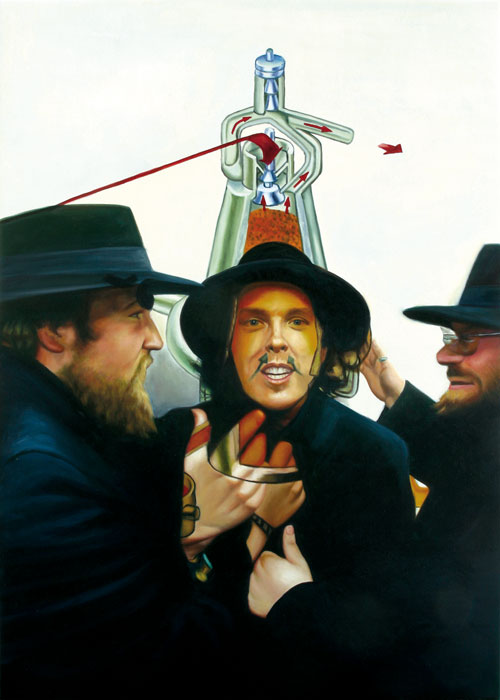


“Ninth Tableau: How monochrom went out into the world, acquiring Amish hats in the United States, scoping out the situation and hatching underhanded plans”
The Lodge was presented in the United States of America in the course of a monochrom tour. Back in Vienna an announcement arrived from the Austrian Coca Cola headquarters calling for entries to the “Coke Light Art Edition”, a competition targeted at the usual list of creative young people under the rather promising motto “COURAGE & INDIVIDUALITY, Dare to find your own happiness”. It seemed like an open invitation that obviously made sense: the “Sun Breasts Hammer” logo, which continued to languish under an unoptimized bottom line in the economy of popular attention, could enter into a temporary alliance with Coca Cola, profiting from the attention generated by its omnipotent competitor, and maybe even garnering a sort of start-up financing from its popularity. After all, The Coca Cola Company had in the past repeatedly succeeded in becoming a topic of conversation through spectacular actions such as the murder of South American union representatives. Similarly to the relationship of the Afghan Taliban movement to the USA, a pact with Coca Cola could put “Sun Breasts Hammer” in a position where it could enter into an open conflict with the popular multinational, and in the long term maybe even replace the company’s lagging old nemesis Pepsi. Wasn’t it Voltaire, or someone like that back in those days, who said: “Competition stimulates business”!? In any case, monochrom’s management – Johannes Grenzfurthner and Günther Friesinger – and press speaker Roland Gratzer agreed on this course of action in a strategy session held on 22 April 2006. Not only did the historic Beatles profit from their competition for popularity with their competitor Jesus: correspondingly, He also benefited from the renewed attention. In his function as a historic standard of measure he was confirmed far beyond the scope of his traditional sphere of influence.